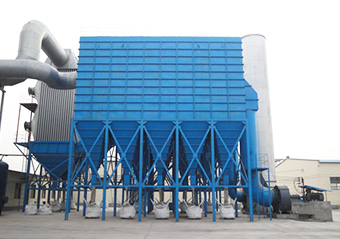



Dust treatment equipment
In industrial production, there are many types of pollutants, which can be divided into two major categories based on their state of existence: particulate pollutants and gaseous pollutants. To protect human health, it is necessary to control air pollution during production. To this end, a series of environmental quality control standards have been established worldwide, mainly including three aspects: ambient air quality standards, emission standards, and environmental technical standards.
Product Introduction
In industrial production, there are many types of pollutants, which can be divided into two major categories based on their state of existence: particulate pollutants and gaseous pollutants.
To protect human health, it is necessary to control air pollution during production. To this end, a series of environmental quality control standards have been established worldwide, mainly including three aspects: ambient air quality standards, emission standards, and environmental technical standards.

The pulse dust collector is an efficient and energy-saving air purification equipment, widely used in the purification of dust-laden gases and the recovery of materials in the metallurgy, building material, cement, machinery, chemical, electric power, and light industries.
It adopts high-pressure gas pulse technology to remove dust from the bag-type dust collector by blowing compressed air. It has the advantages of good dust removal effect, high purification efficiency, large gas handling capacity, long filter bag life, small maintenance workload, and safe and reliable operation.

Working Principle
The pulse dust collector removes dust attached to the filtering medium (bag or cartridge) by blowing compressed air. Depending on the size of the dust collector, there may be several sets of pulse valves controlled by a pulse control instrument or PLC. Each time a set of pulse valves is opened to remove the dust from the bag or cartridge it controls, while the other bags or cartridges work normally.
After a period of time, the next set of pulse valves is opened to clean the dust in the bag or cartridge it controls.

The dust collector consists of the ash hopper, upper box, middle box, and lower box, with the upper, middle, and lower boxes being compartmentalized. During operation, the dust-laden gas enters the ash hopper through the air inlet.
The coarse dust particles directly fall down to the bottom of the ash hopper, while the fine dust particles follow the air flow to turn upward into the middle and lower boxes, where the dust accumulates on the outer surface of the filter bag.

The filtered gas enters the upper box to the clean gas collection pipe - the exhaust duct, and is then discharged to the atmosphere by the exhaust fan.





